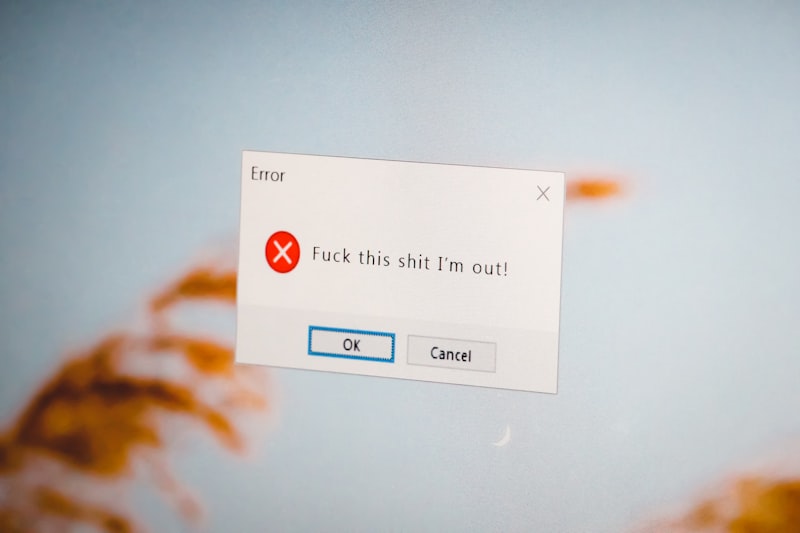Tech Giants Exposed: How Errors Are Costing Them Billions
Introduction:
Have you ever wondered how technology giants, the behemoths of innovation, are still susceptible to costly errors? In this article, we delve into the hidden world of tech giants and uncover how these errors can result in astronomical financial losses running into billions. From software glitches to security breaches, even the most prominent players in the tech industry are not immune to the consequences of their mistakes.
The Financial Impact of Errors:
Errors within the tech industry can have far-reaching repercussions, both financially and reputationally. In an era where technology is the backbone of countless businesses and services, a single error can disrupt operations, leading to substantial revenue losses. Take, for instance, a major social media platform experiencing a technical glitch during peak advertising season—the lost potential revenue could easily amount to billions.
Additionally, errors that compromise user data security can result in severe penalties and legal battles, further denting the financial stability of tech giants. The aftermath of such mishaps involves costly investigations, compensations, and damage control initiatives, all of which contribute to the billions lost due to errors.
Complex Systems Prone to Errors:
Tech giants operate on intricate systems, with numerous interdependent components. Each upgrade or modification carries the risk of introducing new software bugs or vulnerabilities. Despite rigorous testing procedures, the complexity of these systems makes it nearly impossible to catch every potential issue before they arise.
Even seemingly minor errors can cascade into significant problems. A slight oversight in updating a line of code can cause a domino effect, impacting multiple aspects of the system and potentially leading to devastating consequences. It’s akin to a delicate Jenga tower—removing the wrong block can cause the entire structure to collapse.
The Importance of Error Prevention:
Given the scale of potential losses, preventing errors becomes paramount for tech giants. Investing in robust quality assurance processes, thorough testing, and continuous monitoring can help mitigate the risk of errors. Regular security audits, bug bounty programs, and effective incident response plans are essential to identify and rectify vulnerabilities before they are exploited.
Conclusion:
Human Error vs. Machine Failures: Unveiling the Culprit Behind Recent Tech Disruptions
Have you ever wondered what lies behind the tech disruptions that seem to happen all too often? In a world where technology plays an increasingly vital role in our lives, it’s essential to understand the factors contributing to these disruptions. Two prominent culprits often emerge: human error and machine failures. Let’s delve into this intriguing topic and unravel the roles they play.
Human error, as the name suggests, refers to mistakes made by individuals involved in developing, operating, or maintaining technology. Despite technological advancements, humans remain an integral part of the equation. We are prone to making errors—after all, we’re only human. These errors can stem from a momentary lapse in concentration, lack of proper training, or even sheer negligence. Imagine a tired software engineer accidentally introducing a bug while working on an intricate codebase. Such slip-ups, although unintentional, can have far-reaching consequences.
On the other hand, machine failures point to issues arising from the technology itself. Complex systems can encounter malfunctions due to hardware defects, software glitches, or compatibility problems. Think about your smartphone freezing, a laptop crashing, or an autonomous vehicle experiencing a sudden malfunction. These scenarios demonstrate how machines can let us down when we least expect it.
It’s crucial to recognize that human error and machine failures often go hand in hand. In many cases, human actions or decisions can trigger or exacerbate machine failures. Conversely, technological deficiencies can create opportunities for human error to occur. This intricate relationship between humans and machines highlights the need for a comprehensive approach to mitigate tech disruptions effectively.
To address these challenges, organizations must focus on two key aspects: education and technology enhancement. Proper training and ongoing education can equip individuals with the knowledge and skills needed to minimize human errors. Simultaneously, investing in robust technology infrastructure, rigorous testing processes, and fail-safe mechanisms can help reduce machine failures.
Cybersecurity Nightmare: Rising Number of Errors Lead to Data Breaches
Are you prepared for a cybersecurity nightmare? The digital landscape is plagued by an alarming rise in data breaches, and it’s enough to make your hair stand on end. Picture this: a seemingly impenetrable fortress of digital security breached by a single error. It’s a chilling thought that leaves us questioning the safety of our personal information.

Data breaches have become a modern-day horror story, with hackers continuously devising cunning methods to exploit vulnerabilities. These breaches can lead to disastrous consequences, ranging from financial losses to identity theft. But what is causing this epidemic of errors?
One major factor contributing to data breaches is human error. Despite the advancements in technology, we humans are fallible creatures. A simple mistake like clicking on a malicious link or falling victim to a phishing email could open the floodgates for cybercriminals. It’s like leaving the front door wide open for intruders while we innocently go about our business.
Another culprit behind these nightmares is outdated software and inadequate security measures. Imagine relying on rusty old locks to safeguard your digital assets. Cybercriminals are constantly evolving their tactics, and if we don’t keep up with the latest security updates and protocols, we’re essentially handing them the key to our sensitive data.
Now, let’s take a moment to shudder at the consequences of these data breaches. Personal information falls into the wrong hands, compromising our privacy and exposing us to the risk of identity theft. Businesses suffer severe reputational damage, losing the trust of their customers. The financial implications are staggering, with organizations facing hefty fines and legal battles. It’s a nightmare that keeps IT professionals awake at night.
The rising number of errors leading to data breaches is a cybersecurity nightmare that demands attention. To combat this menace, we must stay vigilant, educate ourselves about potential threats, and adopt robust security measures. Remember, the digital realm is like a virtual battlefield, and we need to fortify our defenses to protect our valuable data. Don’t let your guard down because, in the world of cybersecurity, a single error can have catastrophic consequences. Stay safe, stay secure.
From Glitches to Gaffes: Exploring the Impact of Errors in the Digital Age
In the fast-paced digital age, errors can turn a seamless experience into a chaotic one. From glitches in software to embarrassing gaffes on social media, these mishaps have a profound impact on individuals and businesses alike. Let’s delve deeper into the world of errors and their consequences.
Glitches, those pesky technical bugs that disrupt our digital lives, can leave us feeling frustrated and helpless. Whether it’s an app crashing or a website malfunctioning, these hiccups can derail our productivity and test our patience. But beyond personal inconvenience, glitches can have far-reaching implications for businesses that rely on digital platforms. A faulty e-commerce website, for example, can result in lost sales and damage a company’s reputation. In this interconnected era, where online presence is crucial, even the smallest glitch can have a cascading effect on customer satisfaction and loyalty.

While glitches are often unintentional, gaffes in the digital realm are usually the result of human error. Social media has become a breeding ground for embarrassing slip-ups. Remember when a major brand accidentally posted an inappropriate tweet? Such blunders not only go viral within minutes but also tarnish the image and credibility of the organization responsible. The speed at which information spreads on social media amplifies the impact of these gaffes, making damage control an uphill battle.
In this era of instant sharing and global connectivity, errors have the potential to reach an audience of millions in mere seconds. The proliferation of smartphones and social media platforms means that anyone can capture and disseminate errors with ease. Even the most well-intentioned individuals or companies can find themselves at the center of a public spectacle due to a momentary lapse in judgment or an unfortunate mistake. The repercussions can be long-lasting, affecting personal relationships, professional opportunities, and brand perception.
Errors in the digital age highlight the need for vigilance and attention to detail. Companies must invest in robust quality assurance processes to identify and rectify glitches before they impact users. Social media managers and content creators should exercise caution and double-check their posts to avoid costly gaffes. And as individuals, we must navigate the digital landscape with mindfulness, understanding the potential consequences of our actions.
In a world where even the tiniest error can go viral, it’s crucial to recognize the impact of glitches and gaffes. By prioritizing quality, accountability, and carefulness, we can strive for a digital environment that is more reliable, trustworthy, and respectful of both individual and business reputations.